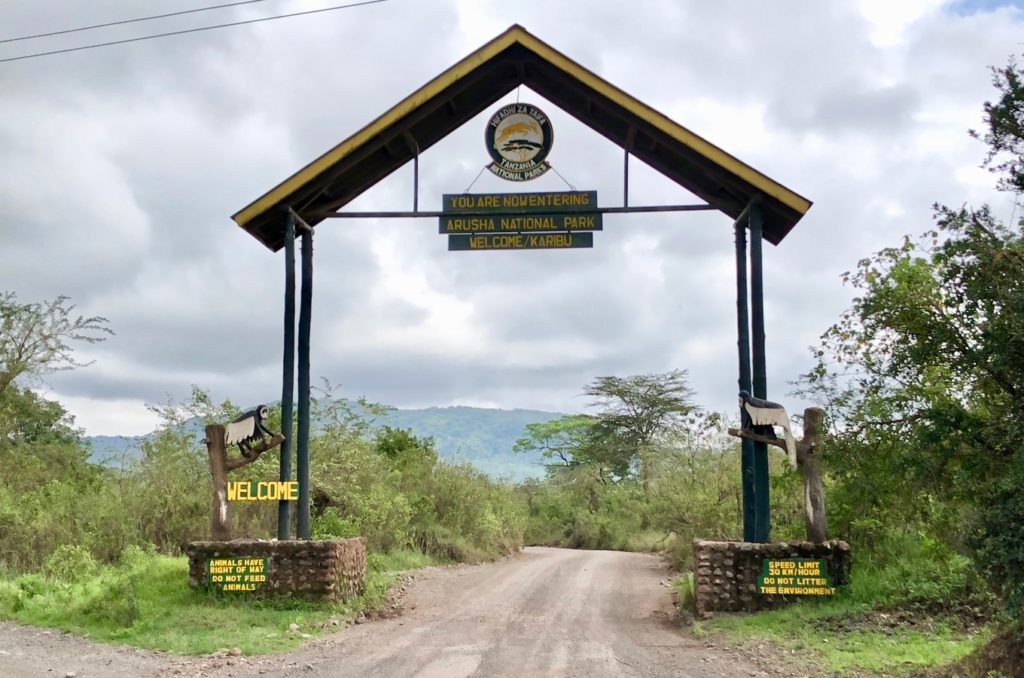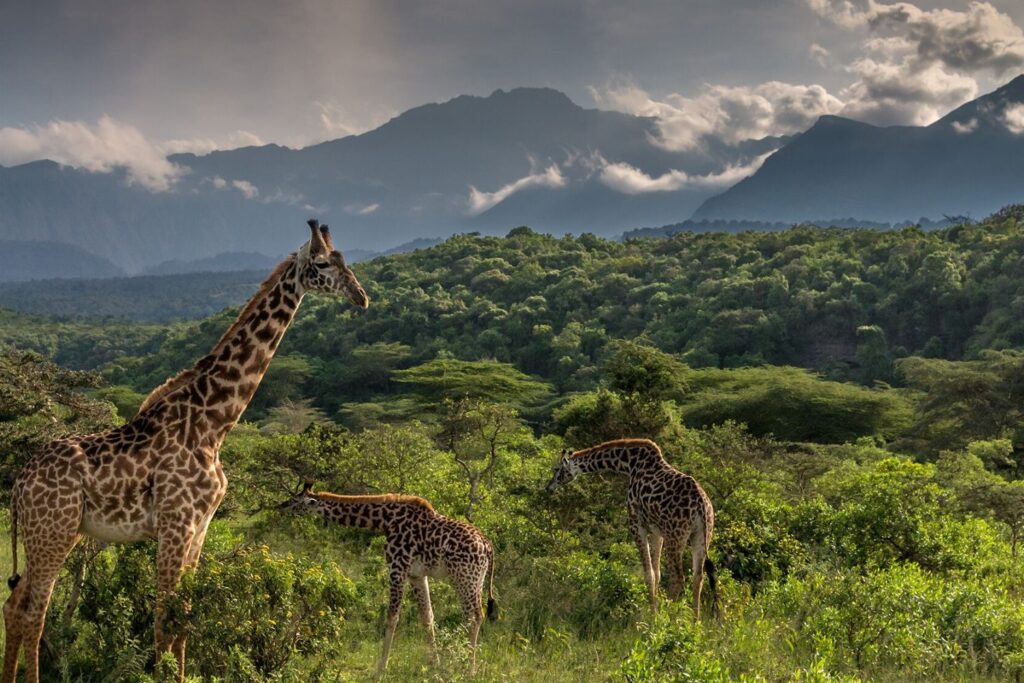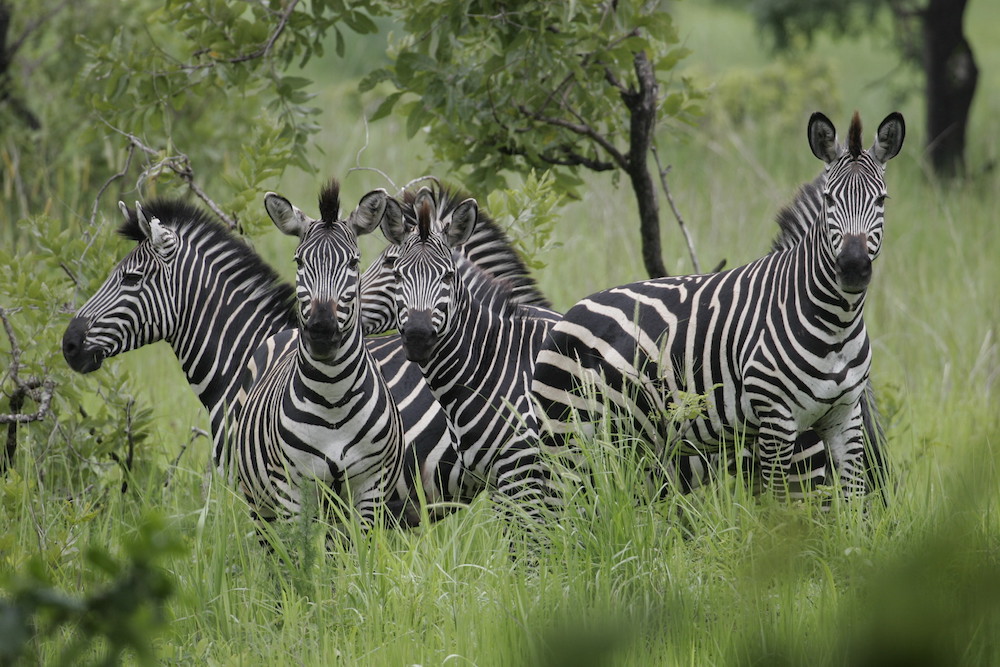Exclusive guide to Arusha National Park
Arusha National Park, situated in the Arusha Region of northeastern Tanzania, encompasses an area of 137 km² (53 sq. mi) and includes Mount Meru, a notable volcano with an elevation of 4,566 meters. Despite its modest size, the park features diverse and stunning landscapes across three distinct areas: the West, the Meru Crater, which channels the Jekukumia River, and the peak of Mount Meru, located on the crater’s rim. Mount Meru is the second tallest summit in Tanzania, following Mount Kilimanjaro. Arusha National Park was founded in 1960 and is administered by the Tanzania National Parks Authority.

Arusha National Park is situated along a 300-kilometer stretch of Africa’s most renowned national parks, extending from the Serengeti and Ngorongoro Crater in the west to Kilimanjaro National Park in the east. The park is located a few kilometers northeast of Arusha, while the main entrance is about 25 kilometers east of the city. It is situated 58 kilometers from Moshi and 35 kilometers from Kilimanjaro International Airport. Arusha National Park encompasses a diverse array of landforms, including open grassland, acacia scrubland, rainforest, and alpine conditions at the highest elevations of Mount Meru.
Attractions in Arusha National Park.
Fauna.
Arusha National Park is abundant in wildlife, featuring a diverse array of species, including giraffes, Cape buffalo, zebras, warthogs, black-and-white colobus monkeys, blue monkeys, flamingos, elephants, bushbucks, and leopards, among numerous other animals.
Bird species.
Arusha National Park is a premier birdwatching site, including a diverse array of avian species, including the Greater Flamingo, Helmeted Guineafowl, Lesser Flamingo, Silvery-cheeked Hornbill, among several more within the reserve.
Mount Meru.
The caldera of Mount Meru spans 2.2 miles (3.5 km) in width and serves as the principal topographic feature of Arusha National Park. Its fertile slopes ascend above the adjacent savanna, sustaining a forest that harbors a diverse array of wildlife, including nearly 400 avian species and various animals such as monkeys and leopards.

Canoeing on the Momella Lakes.
The Momella lakes in Arusha National Park comprise a sequence of seven: Big Momella, Small Momella, Kusare, Lekandiro, Tulusia, Rishateni, and El Kekhotoito. Each of these lakes exhibits varying shades of green or blue due to algal proliferation; the water is deemed unsuitable for consumption, however it is utilized for canoeing, allowing observation of buffalo, bushbuck, giraffes, hippos, and numerous aquatic birds inhabiting the vicinity.
Ngurdoto Crater.
The Ngurdoto Crater is teeming with diverse Tanzanian wildlife and serves as a prominent stopover during game drives, where one can observe various animal species, including Cape buffalo, elephants, monkeys, baboons, warthogs, various antelopes, and black and white colobus monkeys.
Lake Longil.
Lake Longil is the sole freshwater lake in the park, consistently frequented by animals like as waterbucks and buffaloes, which can be observed at its beaches throughout your visit.
Ngurdoto Museum.
The Ngurdoto Museum is dedicated to showcasing various animal species found within the Ngurudoto Crater, including the Cape buffalo, monkeys, and black and white colobus monkeys. The museum features an impressive collection of specimens, encompassing animals, birds, and insects that are also represented in the park.
Tululusia Hill.
Tululusia Hill is an exceptional location for camping and hiking within Arusha National Park, serving as a prominent vantage point. Historically, it functioned as a lookout during the tribal conflicts that occurred in the region now encompassed by the park.
Little Serengeti.
Locally referred to as Serengeti ndogo, the mini Serengeti is an expansive grassland within Arusha National Park, where diverse wildlife, including elephants, giraffes, buffaloes, zebras, warthogs, and waterbucks, congregate to graze, making it a significant draw for tourists.
Things do in Arusha National Park.
Wildlife observation.
Arusha National Park offers optimal game viewing, featuring the most advantageous observation spots within the park. The game drives occur at various times throughout the day, including morning and evening, allowing close encounters with nearly every animal species in the park. Accompanied by guides in a four-wheel vehicle, one can observe species such as hippos, elephants, zebras, buffalos, monkeys, hyenas, waterbucks, warthogs, and lions, among others, creating unforgettable memories.
Bird Watching
Arusha boasts over 400 avian species, including the African fish eagle, African olive pigeon, Augur buzzard, Bar-tailed trogon, Bearded vulture, Black saw-wing, Cinnamon-chested bee-eater, Egyptian goose, Great crested grebe, Hartlaub’s turaco, little grebe, and Narina trogon, among others.
Mountaineering.
Ascend the mountain Meru will provide exhilarating encounters as you engage with wildlife and flora during your ascent. The sloping forested hills will reveal primates such as the black-and-white colobus monkeys, red-tailed monkeys, olive baboons, and others, while the wooded savannah is equally abundant.
Canoeing.
Canoeing activities at Arusha National Park offer a remarkable experience, allowing participants to glide past herds of elephants, giraffes, hippos, and buffalo, while navigating the lake’s beaches amidst numerous bird flocks.
Guided Nature Walks
During their nature walk, tourists can encounter various animals in the park, including buffalo, elephants, lions, hyenas, and leopards. Walking trails must be traversed with an experienced tourist guide, and adherence to instructions is essential. Notable trails include Kitoto to Njeku via Meru Crater, Momella Gate to Itikoni, Ngurdoto Crater Rim, Buffalo to Kaitong, Laitong to Buffalo, and Momella Gate to Tululusia Waterfall, with durations ranging from 2 to 6 hours depending on the chosen trail.

Best time for visiting Arusha National Park.
The optimal periods for visiting the ark are from June to September and December to March, coinciding with the dry seasons.
Accommodation options in Arusha National Park.
Accommodation options include budget, mid-range, and luxury facilities such as the Arusha Serena Hotel, Resort and Spa, Hatari Lodge, Tulia Boutique Hotel and Spa, Banana Farm Hostel, Mambo Hideaway, Graceland Hotel, Mount Meru Hotel, Kigongoni Lodge, Onsea House, and Arusha Crown Hotel, among others.
Entrance Fees of Arusha National Park.
| Category | PEAK SEASON ( 16th May to 14th March) | LOW SEASON ( 15th March to 15th May) | ||||
|
|
East Africa ( Tshs) | Non East Africa Citizen (USD) | Expatriate/ Residents (USD) | East Africa (Tshs) | Non East Africa Citizen (USD) | Expatriate Residents (USD) |
| Of above the age 16 years | 10,000 | 50 | 25 | 10,000 | 45 | 22.5 |
| Between the age of 5 and 15 years | 2000 | 15 | 7.5 | 2000 | 15 | 7.5 |
| Children below the age of 5 years. | Free | Free | Free | Free | Free | Free |
Directions to Arusha National Park.
Arusha National Park can be accessed from Arusha town via two modes of transportation: road or air travel.
By Flight.
A direct flight to Kilimanjaro International Airport is available, taking 29 minutes from Arusha town. The aerial distance from Arusha town to Arusha National Park is 17 kilometers (10.6 miles).
By Road.
The distance from Arusha town to Arusha National Park is 51.2 kilometers via Arusha-Himo Road/A23 and Momela Road, requiring approximately 1 hour and 52 minutes to arrive at the park.
Arusha National Park’s attractions may be experienced in a single day, and it is the sole park in Tanzania’s northern circuit that permits walking safaris. The area’s diverse landscapes contribute to an exceptional variety of animals.
